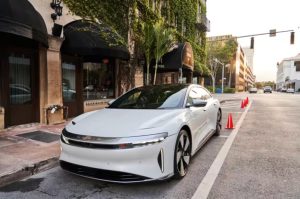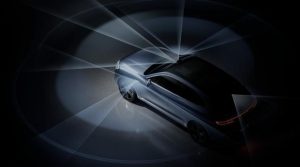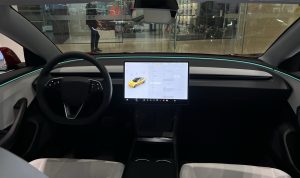The rise of EV giants poses a heavy reality for Japanese cars
5 min read

Foxconn Group, known as Hon Hai Precision Industry Co., Ltd., has introduced its pure electric vehicle (EV) “Model B” in October 2022 in Taipei.
The world’s best-selling vehicles are priced around 2 to 3 million Japanese yen. There are approximately 2 billion people worldwide who can afford cars, with 1.9 billion falling within this price range. While this pricing range poses profitability challenges for Japanese, American, and European companies, it presents a lucrative market for Chinese mainland companies and Foxconn.
During my interviews with several EV startups overseas this summer, I came across the term “CDMS” multiple times. Although companies did not explicitly explain it, they seemed to be considering collaborations with external contract manufacturers to enter the EV business.
Enterprises that contract-manufacture electronic devices such as smartphones are known as “EMS” (Electronics Manufacturing Services). CDMS stands for “Contract Design and Manufacturing Service,” referring to the “automotive version of EMS” that offers EV design and manufacturing services.
Taking everything into account, Taiwan’s Hon Hai Precision Industry Co., Ltd., commonly known as Foxconn, is highly likely to be the collaborative partner for many of these companies. Foxconn, renowned for assembling Apple’s iPhone, is expected to enter the EV contract manufacturing sector soon. It is currently establishing manufacturing bases and engaging with emerging EV manufacturers in China, Southeast Asia, India, and the United States.
For Foxconn, EVs represent the next domain after smartphones that has reached maturity. About three years ago, Foxconn introduced a specialized EV chassis and formed a supply chain alliance by convening over 200 suppliers (component and material manufacturers).
In essence, the company is targeting the EV sector after achieving success with smartphone assembly, leveraging its expertise in contract manufacturing and supply chain management to make a significant impact on the EV market.
It is said that many of Foxconn’s customers are startups in mainland China. Despite Taiwan’s delicate position due to tensions between China and the United States, Foxconn is actively trying to increase its presence in the automotive industry by collaborating with companies from both China and the United States in this rising EV sector.
From an overseas perspective, two significant forces are emerging in the automotive industry: Foxconn and mainland Chinese companies.
Mainland Chinese companies need little introduction. In the realm of vehicle batteries, often referred to as the “21st-century gasoline,” companies like Contemporary Amperex Technology Co., Ltd. (CATL) and BYD hold over 50% of the global market share. In recent years, major international oil companies from the 20th century have shown strong interest in renewable energy and vehicle batteries, but they are unlikely to surpass Chinese companies.
Regarding vehicles themselves, China has overtaken Japan as the world’s largest exporter from January to June. Within China, companies like BYD, which have had strong EV sales, are leading the way. Chinese companies are closely trailing Japanese and European-American giants and are gaining a foothold in Europe, Southeast Asia, Central Asia, and Australia.
However, Chinese companies also face obstacles. In Europe, France has proposed that “EVs should only be imported if they are produced within the European region” on environmental grounds. In the United States, EVs produced in China do not qualify for subsidies, effectively excluding them.
This not only reflects concerns about the improving quality and competitiveness of Chinese mainland companies but is also driven by factors such as the prolonged slump in China’s real estate market. Additionally, semiconductor restrictions on China by the United States, Europe, and Japan have led to reduced exports of communication equipment and computers assembled in China.
As a result, the EV and automotive battery sectors, as drivers of economic growth, are increasingly anticipated, and exports in these two fields are likely to continue to grow in the future. Some have pointed out that the intensifying competition in the Chinese mainland’s EV market, particularly the oversupply of production capacity, has led to ongoing price wars and an urgent need to accelerate exports.
Facing a “promising market” with thin profit margins but high sales volumes
If China and Foxconn’s influence continues to expand, there may be concerns raised. However, it may be challenging to control the rise of both. In the medium to long term, the key factor is cost competitiveness.
For instance, the most sold cars in the world are priced at around 2 to 3 million yen (approximately 100,700 to 151,000 RMB). There are about 2 billion people worldwide who can afford such cars, and 1.9 billion of them are potential customers in this market. For Japanese and Western companies, this price range is challenging to achieve profitability, but for mainland Chinese companies and Foxconn, it represents a “promising” market.
This might be particularly advantageous for Foxconn. Foxconn has a strong track record in producing over 200 million smartphones annually, with a focus on the strategy of thin profit margins and high sales volume.
Looking ahead to 2030, seven years from now, if global new car production reaches 90 million units, and 30% of them are EVs, then the EV market would be around 27 million units. Foxconn’s medium to long-term goal is to capture a production share of 10% to 30% globally. If it were 10%, that would be 2.7 million units, and if it were 30%, it would be 8.1 million units. In the latter scenario, Foxconn would need to capture production capacity equivalent to the entire output of Volkswagen, the world’s second-largest automaker, from existing manufacturers.

It might be called the era of the “EV giants” on both sides of the Taiwan Strait. If such an era arrives, most existing car manufacturers are likely to face a tough battle. In simple terms, it’s the era of hardware commoditization for EVs. If the market of “1.9 billion people” is taken over, even though there’s a high-end market of the remaining “100 million people,” the problem is how existing car manufacturers can enhance their brand appeal.
The weighty reality facing Japanese companies
I am reminded of a prediction by Marc Andreessen, who developed the “Netscape” browser during the early days of the internet more than a decade ago. In an article titled “Software is eating the world,” published in an American newspaper, he forecasted that “hardware will continually lose value and move toward software,” which later proved to be highly accurate and gained significant attention. This prediction became a reality after four years of the iPhone’s launch, a device that could upgrade its functions through apps.
What happened with digital products like smartphones could also occur with cars. As mainland China and Taiwanese companies make leaps in development, the more EVs become widespread, the more outdated the hardware of cars becomes. Companies that cannot find a way forward in software and brand appeal for their vehicles will have no choice but to decline. The heavy reality and the future are in front of the Japanese automotive industry.



